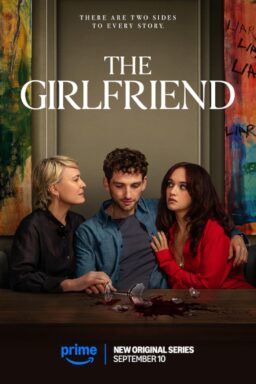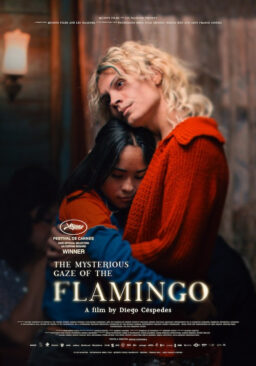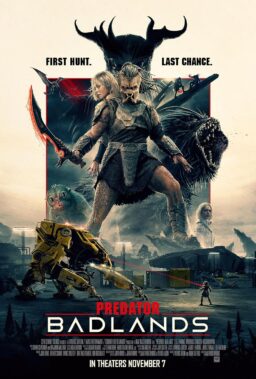Three very different films premiered in the U.S. Dramatic Competition program at the Sundance Film Festival today, representing the diversity in tone and subject matter clearly attempted by the programming committee this year. Sadly, only one of them really works, but it does so in a way that should ripple beyond Park City, especially regarding how completely its already-famous star delivers when given a major film role.
Of course, that film is Carlos López Estrada’s ambitious “Blindspotting,” a movie that has already been criticized for some tonal jumps in the final act. Sure, the film bites off a bit more than it can chew, but I’ll go to bat for a creative team that tries something this ambitious and culturally resonant instead of so much of the lazy indie filmmaking we so often see. “Blindspotting” is a raw, abrasive call for an adjustment in the way we see each other. It is so much a film of its moment that there were also opening night criticisms arguing it was too on the nose for where we are in 2018. With the amount of tone-deaf cinema being released every year, give me a film that you could call too culturally relevant every single time.
The title refers to the Rubin Vase illusion. You’ve all likely seen it—it’s that one where an image either looks like two faces or a vase depending on how you first perceive it. “Blindspotting” is about not just perception but how prejudice informs it. Sure, if you see the vase, I can tell you to see the faces, and you will. But why did you see the vase the first time? The question to ask is not how we adjust our perception based on new information but what informs that initial impression in the first place.
Co-written by its stars, “Blindspotting” is the story of Collin (Daveed Diggs) and Miles (Rafael Casal), a pair of fast-talking movers in an increasingly-gentrifying Oakland. Collin has been on probation for a year, and he has three days left to play by the rules or risk going back to jail. That means a curfew and staying away from anything remotely criminal. Of course, that’s going to prove difficult. You see, Miles is a bit of a, shall we say, troublemaker. He’s been Collin’s best friend since childhood, but he’s arguably not the best influence on him, and Diggs and Casal are careful to show how the races of these two gentlemen impact not only their relationship but how the rest of the world sees them.
Collin is the soft-spoken, quieter half of the duo; Miles is the fast-talking, grill-wearing, hipster-hating, borderline psychopath. In the film’s hilarious opening scene, Miles buys a gun from a guy who reveals he now has to go pick someone up via Uber, and that gun creates an instant threat. Will Collin get caught with it? Will Miles do something stupid? And then Collin sees something horrific when he’s headed back to his halfway house—he watches a cop (Ethan Embry) shoot a fleeing, unarmed black man. The cop sees him. And Collin drives off, but he’s haunted.
“Blindspotting” was once conceived as a spoken rhyme piece, and you can still feel those rhythms in it in both Miles’ constant hustling flow and a climactic scene from Diggs, who is simply fantastic here. He captures multiple layers of a man literally trapped by a system that tells him where to be and even who to be. The dialogue often hums and flies so fast that you miss its references, some of which are admittedly in the “mouthpiece” category of screenwriting, but the whole film has such a heightened sense of reality that it just becomes a part of its rhyme. Miles says at one point, “Everybody listen more when you make it sound pretty,” and that’s definitely key to the filmmaking approach in “Blindspotting.” When the film arrives at some seriously dark places, especially in the final act, it’s not as successful, but the passion never wanes. It’s a love letter to Oakland that also very deftly understands the racial differences in that city and around the world. It’s about images and shit you can’t escape. You may see the vase the second time, but you see the faces the first. And you should see this movie.

While the style of Estrada’s film seems to directly influence and even highlight its themes, the overabundance of it in Bart Layton’s “American Animals” is just distracting. It’s a film that feels thrilling at times in the way it breaks traditional narrative/documentary form, but that’s not enough to get past its many missteps, including a story that ultimately rings shockingly hollow. This is another tale of dumb kids trying to steal the American dream instead of working for it, but it seems to have even less to say about that dynamic than most movies in this subgenre. And some of the directorial choices, including on-the-nose music cues, get just exhausting long before the film is over. It’s tempting to say that there’s an interesting true story buried here under all the filmmaking excess, but I’m not even sure that’s true—I think the excess is there to disguise the lack of anything to hold on to.
Four guys did something really stupid in Lexington, Kentucky in 2004. After learning that a university library held some of the rarest books in existence, including the Audobon paintings and The Origin of the Species, they conspired to steal them. Led by the meeker Spencer (Barry Keoghan) and the gregarious Warren (Evan Peters), this quartet pulled off one of the dumbest heists in history, including having to subdue a librarian (Ann Dowd) and arrange clandestine meetings with people to fence the stolen goods.
The interesting twist of “American Animals” is that Layton, the director of the excellent “The Imposter,” blends his documentary background with this true story narrative feature. The film includes interviews with the real guys, done straight to camera, along with sound bites from their parents and teachers. Imagine “I, Tonya” if it was actually Harding and Gilooly in the interview footage done straight to camera. And Layton gets even more daring when he plays with memory, allowing Spencer and Warren to contradict each other and then showing multiple versions of the same event. At one great moment, the real Warren even appears in a scene with the fictional Spencer.
Sadly, Layton’s style is in service of a story for which he never found the hook to justify telling it. Is this another movie about kids waiting for something to happen and falling into stupidity out of sheer boredom? I’m not sure that’s accurate. One of the young men does it mostly to impress Warren and another comes from a wealthy enough background that he certainly doesn’t need the money. Part of the problem is I’m not sure the guys even really know why they did it. Even with dual versions of all four guys, I don’t feel like Layton ever figured out why he was telling this story. I know I never quite got a handle on why I was watching it.

A similar lack of purpose plagues Craig William Macneill’s deadly slow “Lizzie,” a film that purports to transport us to the months before the day that Lizzie Borden infamously picked up an axe and gave her mother forty whacks but never feels like anything more than a filmmaking exercise, and a stiff one at that. The true shame is that Chloe Sevigny and Kristen Stewart are totally committed here, giving their all as they so often do, but the project doesn’t really reward their efforts.
Sevigny stars as the infamous hatchet swinger and the film opens on the day she allegedly murdered her parents. Macneill then swings back six months to show us the build-up to the carnage. Lizzie Borden is portrayed as an essentially trapped woman—trapped by a health condition that sends her into seizures and trapped even more by an awful father (Jamey Sheridan) who basically thinks nothing of her. Lizzie’s days brighten a bit when a new servant arrives at the house in the form of Bridget Sullivan (Stewart). The two outsiders form a friendship that becomes something more, and then Lizzie’s cruel father threatens to tear them apart.
“Lizzie” is too often a case study in unearned pregnant pauses and longing stares. It never feels lived-in or feels like it has a chance to breathe, too often serving as either a stuffy costume drama, or, worse, an “explainer” for a famous murder instead of the character study or even the mood piece it could have been. Sheridan’s father role is so remarkably vicious and cruel, almost as if screenwriter Bryce Kass is nudging you in the side and saying, “See! This is why she did it!” And when the film’s not being brutally obvious, it’s just being remarkably pretentious. The true tragedy is that Sevigny and Stewart are quite good with what they’ve been given, but even they often appear uncertain of the overall picture or purpose of the film. Still, there are beats in Sevigny’s swallowed rage of Stewart’s quiet misery that show one the movie that “Lizzie” could have been with a stronger directorial hand and tighter script. The film tries to tell a story we think we know in a new way but it never quite justifies the deep dive into a legendary murder that perhaps will always work better as a children’s rhyme.












